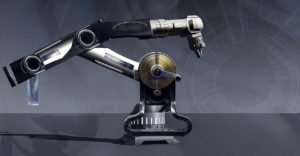Safety Tech
Top 5 safety tech trends in 2020!
John Kersey forecasts some of the exciting safety tech trends that will influence the world of safety in 2020.
“The future is like a corridor into which we can see only by the light coming from behind,” Edward Weyer Jr.

Concerns on privacy and data protection probably affected the adoption of some technologies such as wearables and computer vision systems with some vendors carefully positioning their offerings away from the label of “facial recognition” to the more benign one of “object recognition”! The EU has responded to public unease by drafting a whitepaper considering a prohibition of between three – five years on its use in public spaces. This interest in regulation generally is a further indication that we are in the normative stage here.
As we look forward into this new year of 2020 we benefit from the substantial inroads of safetytech into the realm of health and safety during 2019. We saw safetytech very much a talking point at industry conferences and exhibitions fuelled by the general advances of Industry 4.0. The 2019 Safety and Health Expo for the first time featured a Safety Technology Zone, dedicated to a range of devices and applications ranging from alarms to virtual reality and computer vision systems. It featured not only exhibitors but also a range of topics in this area. It was especially pleasing to report through SHP on developments during 2019; and pleasing to see them as fulfilment of my previous predictions! To summarise the general trend, I see safetytech moving from the formative to the normative stage.
So where is the health and safety practitioner positioned at this moment in relation to developments and emerging technology? It’s true exciting and potentially disruptive technologies are in the marketplace however the adoption from the enterprises to professional institutions seems to be centred on “gateway” technology such as drones and virtual reality for training. These are very much standalone and perhaps don’t substantially impact the status quo. A key insight I saw in a survey of health and safety practitioners recognised the largest barrier to adoption as budgetary restraints (67% of respondents) but interestingly featured both equally lack of support from top management (32%) and resistance from the workforce (31%) showing the practitioner is in a pivotal position in making things happen. They must manage both upwards and downwards in digital transformation.
Looking ahead we see three main threads of emerging technology impacting safety in the Industry 4.0 era. These can be summarised as:
- Applied AI;
- Automation;
- Analytics.
The main point often missed is technology developed in one sector or vertical can be adapted or re-purposed to the field of safety so we benefit from innovation in more forward thinking business areas such as marketing (martech) or finance (fintech).
My caveat is always that predicting the progress of technology is usually erratic especially in volatile conditions. So, here are five trends I feel will become more prominent during 2020 as safety tech continues its inevitable march forward:
1. Enhanced immersive reality
People are becoming more comfortable with the use of immersive technology both inside and outside the workplace especially in training or informational applications. We are already seeing mixed reality where these are used together. The next range of developments will be set around the enhancement of immersive reality with applied AI. Initial VR applications for example were restricted by the limitations of the avatars, both in response and performance. There has been the ability to bring AI systems such as IBM Watson into Unity through a software developer kit (SDK). This means that avatars can respond in a closer way to biological humans and opens up the field to “soft skills” applications. In the world of fintech, multiple chatbots can be used as a range of financial advisors and applying this to safety it enables an ensemble of avatars to be deployed. A feasible scenario here could be automated avatars as witnesses in an incident investigation module. The ability to develop such advanced applications will tier the immersive technology vendors market with the upper tier having such advanced developer skills.
2 Startups as an innovation driver
The startup, incubator and adoptor (investor or white knight) system is proving to be a potent driver for innovation in Industry 4.0. This often brings together unlikely alliances such as young pioneers, academia and established industries eager to use or counter disruption. In the safety realm we have seen Lloyd’s Register Foundation fund major developments such as the HSE Discovering Safety initiative as well as their own Safety Accelerator programme whereby difficult or seemingly impossible workplace safety problems are thrown open to a challenge for the startups to provide viable solutions. The Arco Innovation Award is another example of this trend creating an opportunity to bring new thinking to the marketplace. Besides these incubators there are entrepreneurial ventures with worthy causes such as the City MaaS Assist service (citymaas.io) which looks to help disabled people travel easier using applied AI.
3. Agile safety
The domestic market is increasingly adopting advanced technology such as chatbots at a faster rate than in the workplace. Allied to this, the volatility, pace and demands of work fuelled by Industry 4.0 will make the present methods of delivering safety as well as its governance untenable. Safety will need to get more agile in delivering up to date processes, information and respond to developing risk situations in real time. This will increase the demand for shorter intervals in providing key metrics for decision making. Use of IoT devices such as sensors in equipment or building fabric, wearables and telematics in vehicles will stream a lot of high velocity data and supplant human monitoring processes such as inspections,
4. Smart Safety Systems (S³)

The ever increasing number of IoT devices and processes will demand automated systems such as robotic processing automation (RPA) which is embedded in the finance sector in dealing with cyclical or regulated activities such as invoicing etc. Already the protection of people from dangerous areas is being assigned to machine systems such as geofencing or portal systems using computer vision systems. The enterprise in Industry 4.0 is using smart systems tying data from multiple sources and integrating these through advanced systems such as predictive and prescriptive analytics, this enables operational management to find the optimum solution through resource scheduling, condition maintenance for plant and equipment and weather forecasting (for external operations). A natural development here will be to draw in safety data such as risk measures, incident frequencies. human activity based factors (from wearables) and other key variables. Even the seemingly unpredictable personality or risk propensity human factors could be moderated through the application of evidence-based personality systems such as Predikt-r.
5. Personalised safety
A spinoff of the use of agile and versatile software is that it is easier to localise and personalise the content and context of safety for consumption. Applied AI in the form of natural language processing (NLP) enables content to be delivered across a range of languages thus promoting understanding and empathy. Also learning technology will move increasingly to embracing user choice and motivating learning through gameification and user need to succeed. This is finding expression in microlearning delivery in systems such as Workplace DNA where learners are motivated to keep their DNA up by taking responsibility for their own development. Enterprises are already utilising mobile platforms to access worker groups such as temporary or mobile workers that traditionally have been difficult to engage. Actimo is an example of such an employee engagement package founded on the linked trinity of communication, training and leadership. I see this as a potentially strong high performance solution where we will move away from the standard block approach and towards recognising people’s learning preferences. Safety will increasingly engage on an individual basis rather than a group basis.
Disclaimer. The views expressed in this article are those of the author and do not necessarily represent those of any commercial, academic or professional institution I am associated with. Mention of a specific product or service does not necessarily equal endorsement.
Top 5 safety tech trends in 2020!
John Kersey forecasts some of the exciting safety tech trends that will influence the world of safety in 2020.
John Kersey
SHP - Health and Safety News, Legislation, PPE, CPD and Resources Related Topics
Drug and alcohol testing in a UK airport environment
Unleashing the power of emerging technologies in EHS
Passing the baton – Meet the 2024 IOSH President


